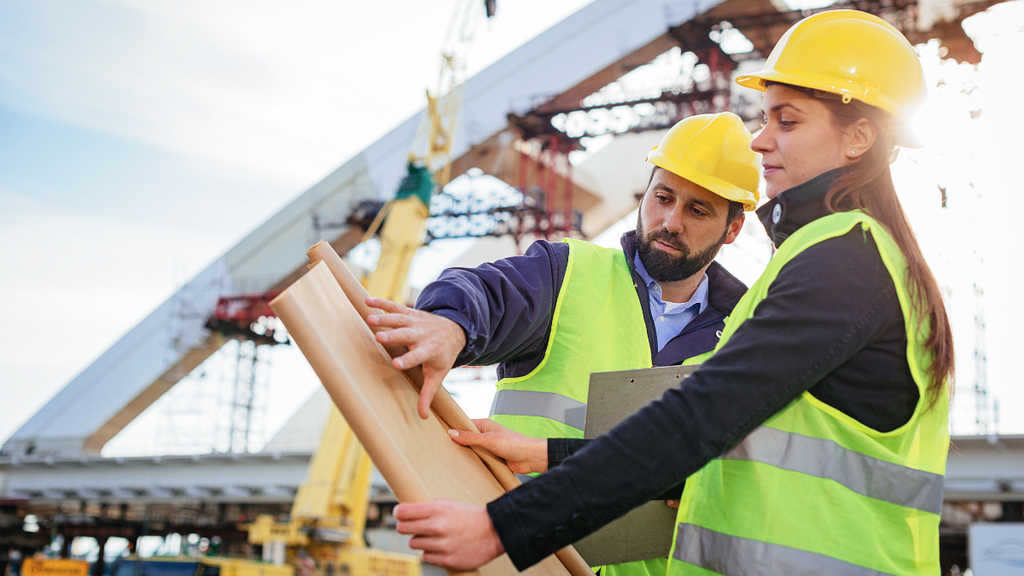Geotheta Fundamentals Explained
Table of ContentsThe Ultimate Guide To GeothetaAll about GeothetaTop Guidelines Of GeothetaThe Greatest Guide To GeothetaThe Main Principles Of Geotheta

They perform site investigations, collect examples, execute research laboratory tests, and assess information to examine the suitability of the ground for building and construction projects - Consulting Engineers. Based on their findings, geotechnical designers offer recommendations for foundation design, incline security, retaining frameworks, and mitigation of geotechnical dangers. They work together with various other specialists, such as designers, architectural engineers, and construction teams, to ensure that geotechnical considerations are incorporated into the total task style and implementation
By examining the behavior and residential properties of soil and rock, they can determine potential geotechnical risks such as landslides, soil negotiation, or incline instability. Their competence assists stop failings or crashes that could endanger lives and residential or commercial property. Right here are some comprehensive tasks and duties of a geotechnical designer: Site Investigation: Geotechnical designers conduct site examinations to collect data on subsurface conditions.
They interpret the data to understand the buildings and actions of the soil and rock, including their toughness, leaks in the structure, compaction characteristics, and groundwater conditions. Geotechnical Analysis and Style: Geotechnical engineers evaluate the data accumulated during website examinations to evaluate the stability and viability of the website for construction projects. They do geotechnical computations and modeling to evaluate factors such as birthing capability, negotiation, slope security, side planet pressures, and groundwater flow.
9 Easy Facts About Geotheta Explained
Structure Layout: Geotechnical engineers play a critical function in making foundations that can securely sustain the desired structure. They analyze the soil conditions and lots needs to determine the appropriate structure kind, such as shallow structures (e.g., footings), deep foundations (e.g (https://ianhammond2191.wixsite.com/my-site-2/post/unlocking-the-secrets-of-geotechnical-engineering-with-geotheta)., stacks), or specialized methods like soil enhancement. They take into consideration variables such as negotiation limits, bearing capability, and soil-structure communication to create optimal structure layouts
They evaluate construction plans, display site activities, and conduct field inspections to validate that the design recommendations are followed. If unexpected geotechnical concerns develop, they assess the situation and supply recommendations for removal or adjustments to the layout. Risk Evaluation and Reduction: Geotechnical engineers evaluate geotechnical threats and dangers related to the project site, such as landslides, liquefaction, or dirt erosion.

Collaboration and Interaction: Geotechnical designers work closely with other specialists associated with a job, such as designers, architectural engineers, and construction groups. Efficient interaction and cooperation are crucial to incorporate geotechnical factors to consider into the total task style and building process. Geotechnical designers supply technical knowledge, answer questions, and ensure that geotechnical needs are met.
All About Geotheta
Right here are some sorts of geotechnical designers: Structure Designer: Structure designers concentrate on developing and assessing structures for frameworks. They analyze the dirt conditions, lots demands, and site characteristics to identify one of the most ideal foundation type and style, such as superficial foundations, deep structures, or specialized methods like pile foundations.
They examine the variables influencing slope security, such as dirt properties, groundwater conditions, and incline geometry, and create methods to stop incline failings and reduce risks. Earthquake Engineer: Earthquake engineers focus on examining and making structures to hold up against seismic pressures. They examine the seismic hazard of a site, examine soil liquefaction possibility, and establish seismic style standards to make certain the safety and security and durability of structures during quakes.
They carry out field screening, accumulate examples, and examine the gathered data to characterize the soil residential properties, geologic developments, and groundwater problems at a site. Geotechnical Instrumentation Engineer: her explanation Geotechnical instrumentation engineers concentrate on monitoring and gauging the actions of soil, rock, and frameworks. They mount and preserve instrumentation systems that monitor factors such as dirt negotiation, groundwater levels, incline motions, and structural variations to examine efficiency and offer early cautions of potential problems.
The Ultimate Guide To Geotheta
They perform tests such as triaxial tests, combination examinations, straight shear tests, and leaks in the structure tests to gather data for geotechnical analysis and style. Geosynthetics Engineer: Geosynthetics engineers specialize in the layout and application of geosynthetic products, such as geotextiles, geogrids, and geomembranes. They use these products to enhance soil security, strengthen slopes, offer water drainage services, and control erosion.
They have a tendency to be investigative people, which means they're intellectual, reflective, and investigative. They are curious, systematic, reasonable, analytical, and logical. Some of them are likewise social, suggesting they're kind, charitable, cooperative, client, caring, practical, understanding, skillful, and pleasant - Engineer of Record.
In the office atmosphere, geotechnical designers make use of specialized software program devices to execute computations, create styles, and evaluate data. They prepare records, review job specs, interact with customers and staff member, and coordinate task tasks. The workplace setting supplies a helpful setting for research, evaluation, and cooperation with various other specialists associated with the task.
The smart Trick of Geotheta That Nobody is Talking About
They regularly go to project websites to conduct site investigations, evaluate geotechnical problems, and collect data for analysis. These check outs entail taking a trip to various areas, often in remote or difficult surfaces. Geotechnical designers might carry out dirt tasting, conduct examinations, and monitor building activities to guarantee that the geotechnical elements of the job are being carried out appropriately.
Geotechnical designers additionally operate in specialized geotechnical research laboratories. In these centers, they perform experiments, carry out examinations on soil and rock samples, and examine the engineering homes of the products. Geotechnical research laboratory engineers function thoroughly in these environments, taking care of testing tools, running tools, and taping information. They collaborate with various other laboratory personnel to guarantee accurate and trusted screening outcomes.